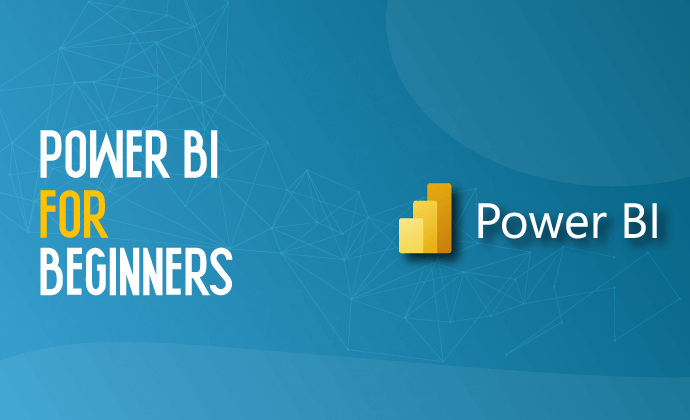
Course Details
The objective of this Power BI course is to provide participants with a comprehensive understanding of Power BI Desktop and its associated tools. By the end of the course, students will be proficient in data loading, data modelling, DAX calculations, visualization creation, and report sharing through Power BI Service. Participants will develop the skills required to create dynamic, interactive dashboards and reports that provide actionable insights for business decision-making.
Course Benefits:
- Gain hands-on experience with Power BI Desktop and Power BI Service.
- Learn to create interactive dashboards and professional-grade reports.
- Master data transformation, cleaning, and modelling techniques.
- Acquire proficiency in DAX to build complex calculations and measures.
- Enhance career prospects with in-demand Power BI skills for roles in data analysis, business intelligence, and reporting.
Prerequisites:
- Participants should have basic knowledge of Excel and general data concepts.
- Familiarity with relational databases and basic querying skills is helpful but not mandatory.
Who Should Attend
- Data Analysts and Business Intelligence Professionals.
- Finance, Sales, and Marketing Analysts.
- IT Professionals and Database Administrators.
- Students and graduates aspiring to pursue a career in data analytics.
- Professionals looking to upskill in data visualization and reporting.
Course Objectives:
By the end of this course, students will be able to:
- Understand the fundamentals of Power BI Desktop and its core features.
- Load, transform, and clean data using Power Query.
- Create and manage data models with relationships and calculated columns.
- Create interactive visualizations and dashboards. 5. Publish reports to Power BI Service and share insights.
Course Outline
Module 1: Introduction to Power BI & Data Loading
1.1 Introduction to Power BI
- What is Power BI?
- Power BI Desktop vs Power BI Service.
- The Power BI ecosystem: Power BI Desktop, Power Query, Power Pivot, Power View.
- Power BI licensing and installation.
1.2 Navigating Power BI Desktop
- Overview of the Power BI Desktop interface.
- Understanding the ribbon, panes, and view modes (Report, Data, Model).
1.3 Loading Data into Power BI
- Connecting to different data sources (Excel, CSV, SQL Server, etc.).
- Basic overview of supported data formats.
- Importing vs DirectQuery mode.
- Practice: Importing sample datasets.
1.4 Power Query Basics
- Introduction to Power Query Editor.
- Data transformation basics: filtering, renaming, removing columns.
- Merging and appending queries.
- Practice: Basic data cleaning tasks.
Module 2: Data Modelling and DAX Fundamentals
- Introduction to Data Modelling
- Understanding data models:
- Tables, relationships, and keys.
- Creating relationships between tables.
- Best practices for modelling: star schema, fact, and dimension tables.
2.2 Introduction to DAX
- What is DAX (Data Analysis Expressions)?
- Basic DAX functions: SUM, AVERAGE, COUNT, DISTINCT.
- Creating calculated columns and measures.
- Practice: Creating simple measures and columns.
2.3 Enhancing Data Models with DAX
- Using aggregation functions and time intelligence basics.
- Calculated measures vs calculated columns.
- Practice: Working with DAX to create meaningful metrics.
Module 3: Visualizations and Dashboards
3.1 Introduction to Visualizations
- Understanding charts, tables, and key Power BI visualizations.
- The visualization pane: choosing the right visual.
3.2 Creating Interactive Visuals
- Creating bar charts, line charts, pie charts, and more.
- Adding slicers and filters. • Best practices for visualization design.
- Practice: Creating a dashboard with basic visuals. 3.3 Advanced Visualizations
- Maps and geographical visualizations. • Using custom visuals from the marketplace.
- Visual interactions: drill-through, tooltips, and cross-filtering.
- Practice: Build an interactive dashboard with multiple filters and visuals.
Module 4: Publishing, Sharing, and Power BI Service
4.1 Publishing Reports to Power BI Service
- Overview of Power BI Service and Workspaces.
- How to publish a report from Power BI Desktop to Power BI Service.
- Organizing content in Power BI workspaces.
4.2 Power BI Sharing and Collaboration
- Sharing reports and dashboards.
- Creating and managing app workspaces.
- Collaboration with other users: comments, sharing, and alerts.
4.3 Refreshing Data and Scheduling
- Setting up data refresh (manual vs scheduled).
- Overview of gateways for connecting on-premise data to the cloud.
- Practice: Set up a scheduled data refresh.
Course Assessment:
A project-based assignment where students will build a Power BI report from scratch, covering data import, data modeling, visualization, and publishing.
Conclusion:
This Power BI course equips participants with essential skills in data analysis, reporting, and visualization. By mastering Power BI Desktop, Power Query, DAX, and Power BI Service, participants will be able to design and share professional dashboards and reports. Whether you are a student, business professional, or career changer, this course will provide you with the expertise to harness the power of data-driven decision-making and secure in-demand roles in data analytics and business intelligence.
Course Curriculum

Ramzan
DeveloperI am a web developer with a vast array of knowledge in many different front end and back end languages, responsive frameworks, databases, and best code practices








